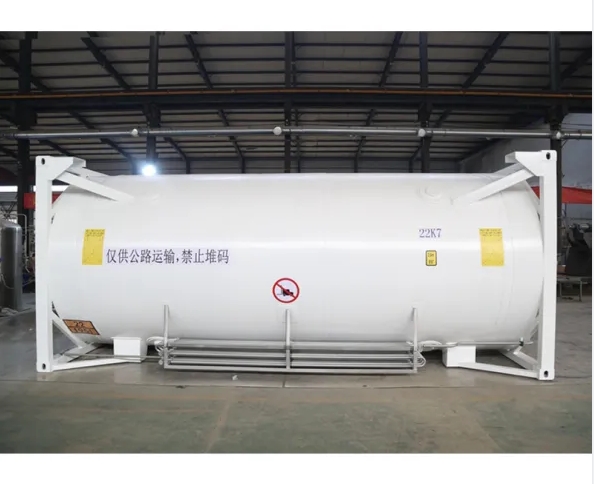What is the meaning of ISO tank container?
In the world of logistics and international trade, ISO tank containers play a crucial role, but many people might not be familiar with this term. In this blog post, we'll delve into the meaning and significance of ISO tank containers, shedding light on their importance in the transportation of liquids and gases.

1. What is an ISO Tank Container?
ISO tank containers are specialized containers designed for the safe and efficient transportation of various types of bulk liquids and gases. The term "ISO" stands for the International Organization for Standardization, which sets the standard specifications for these containers to ensure uniformity and compatibility across the globe. These containers are commonly used for transporting substances like chemicals, fuels, edible oils, and more.
2. Key Features of ISO Tank Containers
To understand the meaning of ISO tank containers, it's essential to know their key features:
A. Standardized Dimensions
One of the defining characteristics of ISO tank containers is their standardized dimensions. These containers conform to specific dimensions and are designed to fit seamlessly on various modes of transportation, such as ships, trucks, and railways. This standardization simplifies the logistics and handling of these containers.
B. Robust Construction
ISO tank containers are built to withstand the rigors of transportation. They are typically made of stainless steel, which provides resistance to corrosion and ensures the integrity of the container's contents. The robust construction also includes reinforced frames and protective features to enhance safety.
C. Safety Features
Safety is paramount when transporting hazardous or non-hazardous materials. ISO tank containers are equipped with various safety features, including pressure relief valves, emergency shut-off systems, and venting systems. These features help prevent accidents and protect both the cargo and the environment.
D. Capacity
ISO tank containers come in various sizes, with capacities ranging from 14,000 to 26,000 liters. This flexibility allows for the transportation of different quantities of liquids and gases, making them suitable for a wide range of industries.
E. Certification and Compliance
ISO tank containers must meet stringent international standards and certifications to ensure their suitability for transporting specific types of cargo. These standards cover aspects such as pressure testing, leak detection, and material compatibility.
3. Versatility of ISO Tank Containers
ISO tank containers are incredibly versatile and can be used to transport a wide range of materials. Let's explore their applications:
A. Chemicals
Chemical manufacturers and distributors often use ISO tank containers to transport a variety of chemicals. Their robust construction and safety features are crucial when dealing with potentially hazardous substances.
B. Food Industry
In the food industry, ISO tank containers are commonly used for transporting edible oils, syrups, and other liquid ingredients. The stainless steel construction ensures that the cargo remains uncontaminated and safe for consumption.
C. Petroleum Products
The oil and gas industry relies on ISO tank containers to transport various petroleum products, including crude oil, gasoline, and diesel. The containers are designed to handle the specific requirements of these substances.
D. Pharmaceuticals
Pharmaceutical companies utilize ISO tank containers to transport raw materials and finished products. The containers' cleanliness and sealing capabilities are essential in maintaining the quality and safety of pharmaceuticals.
E. Beverage Industry
Beverage manufacturers often use ISO tank containers to transport juices, wine, and other beverages. The containers' design and construction help maintain the freshness and quality of the products during transit.
4. The Environmental and Economic Impact of ISO Tank Containers
ISO tank containers offer several advantages in terms of sustainability and cost-efficiency:
A. Reduced Environmental Impact
The environmental impact of transportation is a growing concern. ISO tank containers, with their safety features and reduced risk of spills, contribute to a safer and cleaner transportation process. Moreover, the containers are reusable, reducing the need for single-use packaging.
B. Cost Savings
ISO tank containers can lead to cost savings in the long run. Their durability and reusability lower the overall packaging and transportation costs. Additionally, their standardized dimensions make them compatible with various transportation modes, streamlining logistics and reducing handling costs.
5. The Global Significance of ISO Tank Containers
ISO tank containers have a global reach and significance:
A. International Trade
In the world of international trade, ISO tank containers enable the seamless movement of goods across borders. Their standardization ensures compatibility with different transportation systems, facilitating the exchange of goods between countries.
B. Emergency Response
ISO tank containers are also instrumental in emergency response efforts. They can be quickly mobilized to transport essential supplies like clean water or medical equipment to disaster-stricken areas.
C. Global Supply Chain
These containers are a crucial component of the global supply chain. They help ensure a steady and reliable flow of materials and goods across the world, supporting various industries and economies.
6. Challenges and Considerations
While ISO tank containers offer numerous advantages, there are also challenges and considerations to keep in mind:
A. Cleaning and Maintenance
Maintaining the cleanliness and integrity of ISO tank containers is essential, especially when transporting different types of cargo. Proper cleaning and maintenance procedures are crucial to prevent contamination and ensure safety.
B. Regulations and Compliance
Adhering to international regulations and industry-specific standards is critical when using ISO tank containers. Failure to comply with these regulations can lead to legal issues and safety hazards.
7. Conclusion
In conclusion, ISO tank containers are not just steel tanks on wheels; they are the backbone of modern logistics and international trade. These standardized containers provide a safe, efficient, and versatile means of transporting liquids and gases, benefiting a wide range of industries and economies. Understanding their meaning and significance is vital for anyone involved in the world of transportation and logistics, as they play a vital role in shaping the way we move goods and materials across the globe.




